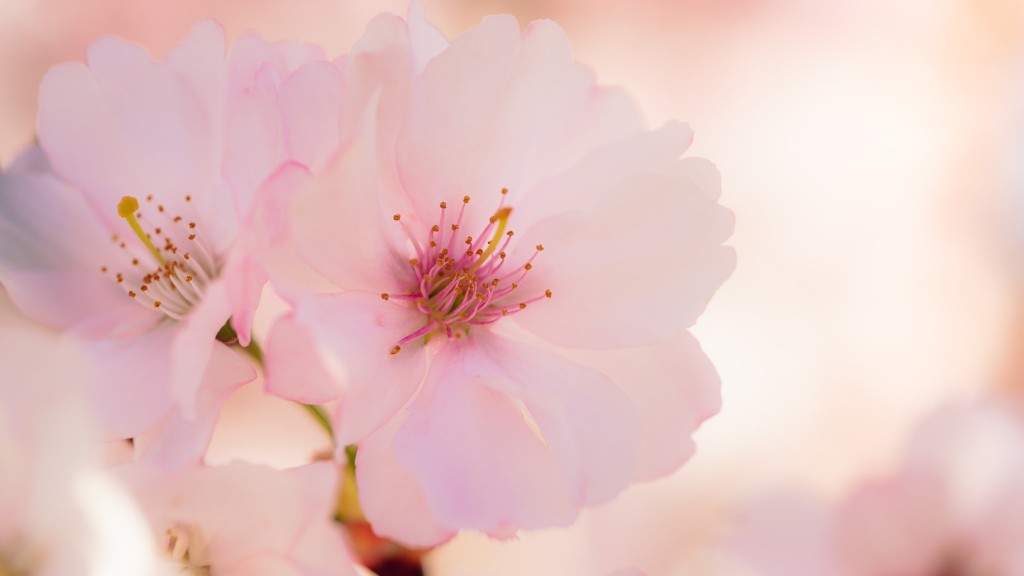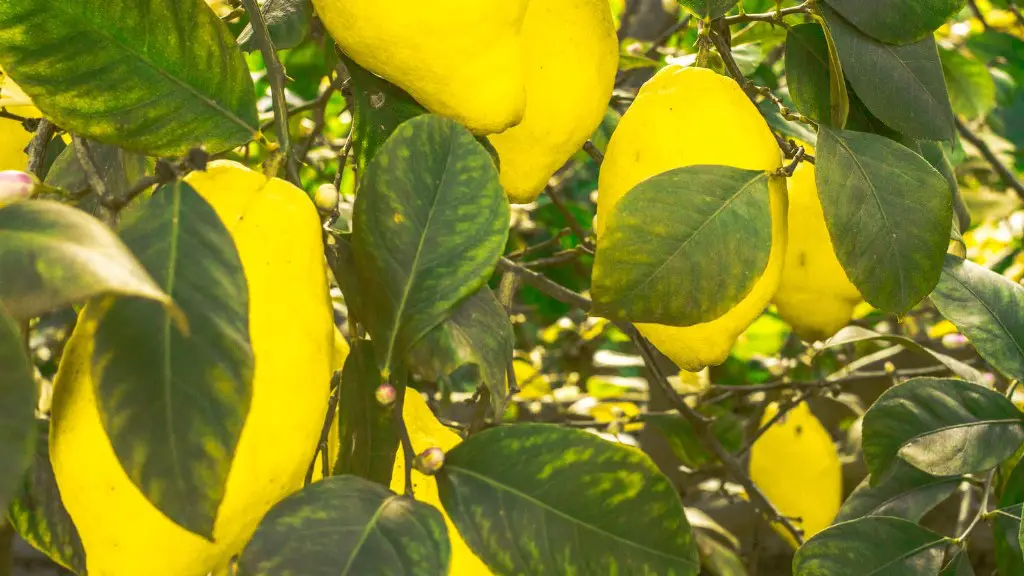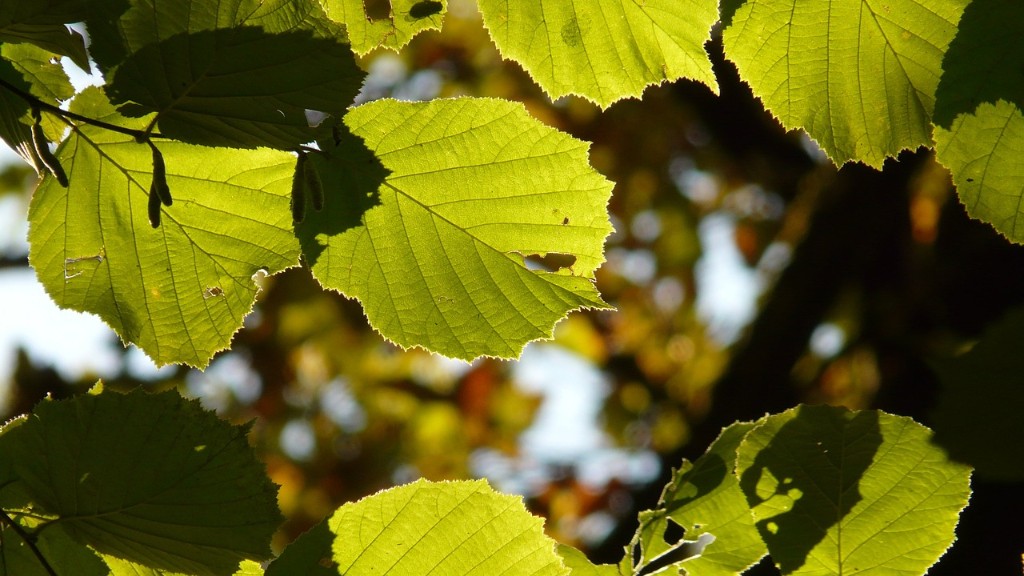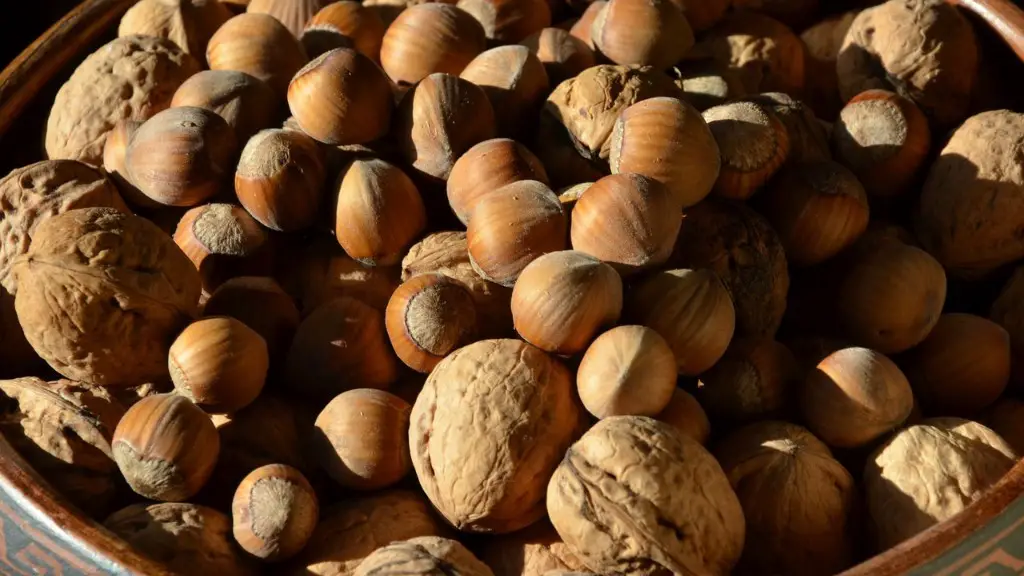Cherry trees are one of the most popular fruit trees grown in temperate climates and have been a favored species since ancient times. The scientific name for a cherry tree is Prunus avium, also known as a sweet cherry or a wild cherry. Prunus avium is part of the genus Prunus that comprises of hundreds of species of shrubs and small trees. This genus belongs to the family Rosaceae, a family of flowering plants native mainly to the northern hemisphere.
The cherry tree is easily recognizable by its unique features, notably its white flowers and fruits with a glossy red color. These trees are also known for their sweet taste, making them popular in recipes and desserts. The trees can reach heights of up to 20 meters and are widely used for outdoor landscaping and to line streets. Cherry trees also have several other uses such as providing shade from the summer sun and enhancing the quality of the soil due to the trees’ nitrogen-fixing properties.
Cherry trees are well suited for many climates, but they require well-drained soils, full sun and some winter protection. The trees usually bloom in the spring and mature by late summer. Harvesting usually starts in early July and can last through late August. The fruits can be used in cooking, or they can be left to ripen on the tree and eaten raw. The hardiness zone of the Prunus avium ranges from 5 to 9.
Cherry trees are deciduous, meaning they lose their leaves in fall and start again in late spring. Different varieties of cherry trees vary in size, shape, fruit color, and other qualities. Some varieties are considered best for eating fresh, while others are better for baking. Each variety usually produces a few different types of cherries that have various qualities and sizes. Some common varieties of Prunus avium include Royal Ann, Stella, Hail Sweet and Black Tartarian.
Many experts agree that the best way to care for cherry trees is by providing the right amount of water and nutrients. Trees need regular applications of fertilizer to thrive and remain productive. Pruning is also an essential practice to maintain the health and vigor of the trees and enhance their fruit production capabilities. Pruning can be done throughout the growing season to maintain the desired height and shape of the tree.
Cherry trees are susceptible to a few diseases such as cherry leaf spot and powdery mildew. It is important to keep an eye out for these diseases and take preventive measures to avoid losing the production of the tree. Some of these preventive measures include proper pruning, irrigation and use of fungicides if necessary.
Cherry trees are an excellent addition to any garden due to their distinctive shape, vibrant colors and delectable fruits. The scientific name for a cherry tree is Prunus avium and it is part of the genus Prunus belonging to the family Rosaceae. These trees are well adapted to many climates and once established, they produce ample crops throughout the summer months.
Harvesting Cherry Trees
Cherry trees usually bloom in the spring and reach maturity by mid to late summer. The fruits can be harvested by hand and usually start in early July and can progress to the end of August. It is common practice to remove some of the fruits to increase the size of those remaining on the tree. The cherries can either be eaten fresh, or they can be left in the tree to ripen and be used for baking. The best way to harvest cherries is to hold the branch and then gently pull them off with a slight twist.
Once the fruits are harvest, it is important to consume or process them as soon as possible. The fruits will last up to a week in the refrigerator and can also be frozen for later use. It is also possible to dry the cherries and preserve them for a longer time, up to a year, depending on the climate.
Propagating Cherry Trees
The most common way to propagate a cherry tree is through seed propagation, but this method is slow and unpredictable. Most often, cherry trees are propagated through grafting, which is done by inserting a section of a mature plant into the side of a young plant rootstock. Grafting has become a popular and reliable way to propagate cherry trees and other plants.
Cutting propagation is another method that is used to propagate cherry trees. It involves removing a branch from the parent tree, cutting it into several small sections, and transplanting the cuttings into the ground. This method is more successful than seed propagation as it has a greater success rate and is relatively fast and inexpensive.
When propagating a cherry tree, it is important to take into consideration the season and the right timing. Grafting is usually done in late winter or early spring, while cutting propagation typically is done in late summer or early fall. It is important to note that propagating a cherry tree can be quite tricky and it is usually best to let a professional handle it.
Pest and Disease Management
Cherry trees are susceptible to several pests and diseases. It is important to identify and treat them in a timely manner in order to prevent any further damage to the tree. Some of the most common diseases include brown rot and powdery mildew. Brown rot is caused by a fungus and can be treated with fungicides. Powdery mildew is caused by a different type of fungus and can be treated with a fungicide, or by providing the tree with more direct sunlight.
The most common pests on cherry trees are aphids and caterpillars. Aphids can be treated with insecticides or with a combination of horticulture oil and soap. Caterpillars can be treated with a biopesticide or an insecticidal spray. It is important to note that using chemical fertilizers or insecticides may help to control these pests, but they can also create an imbalance in soil fertility and contaminate the environment, so it is best to use organic methods.
Cherry Tree Cultivation
Cherry trees are grown for ornamental purposes as well as for their fruit. In order to ensure successful cultivation of cherry trees, it is important to choose the right species and provide the necessary care. The Prunus avium is the most popular species of cherry tree, and it is well adapted to many climates. When planting a cherry tree, it is important to provide well-drained soil, adequate sunlight, and regular irrigation.
When it comes to cherry tree care, the most important steps are pruning and fertilizing. Pruning helps to maintain the desired height and shape of the tree while also enhancing its fruit production. It is usually best to prune the tree during the winter months. Fertilizing also helps to enhance fruit production and ensures the tree has access to the nutrients it requires for healthy growth. Organic fertilizers are preferred, as they are more beneficial for the environment and the trees.
Cherry Trees in the Landscape
Cherry trees are widely used for landscaping due to their unique form and lovely blooms in the spring. They also provide dappled shade, making them ideal for creating an intimate garden atmosphere. When landscaping with cherry trees, it is important to consider the size of the tree, its location, and the other plants and trees that it will be competing with.
Cherry trees can be used as centerpiece trees in a small garden or they can be planted in pairs to create an attractive arbor or pathway. They can also be planted in groups to create a showy display in the spring. When spacing cherry trees, it is best to leave enough room for them to reach their full size without competing with each other.
When landscaping with cherry trees, it is important to consider their resources needs as well. The trees should be provided with adequate sunlight and water, and they should be fertilized regularly. It is also important to keep an eye out for pests and diseases, and to prune them regularly to maintain their shape.
Conclusion
The cherry tree (Prunus avium) is a popular species of tree grown for its tasty fruits and lovely blooms in the spring. It needs well-drained soil, full sun, and some winter protection. Different varieties of cherry trees produce different types of fruits, some better for eating fresh and some better for baking. The trees need regular fertilizing, pruning and irrigation, as well as pest and disease management.
Cherry trees are excellent additions to the landscape due to their distinctive shape, vibrant colors and delectable fruits. They can be planted as the centerpiece in a small garden or in groups to create a showy display. It is important to consider the trees’ resource needs when designing the landscape, as well as proper pruning, fertilizing and pest control.




